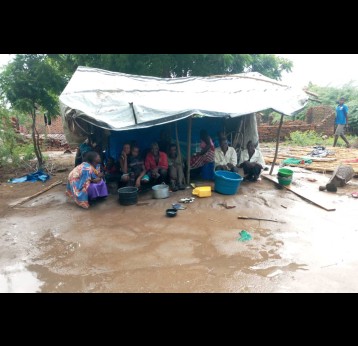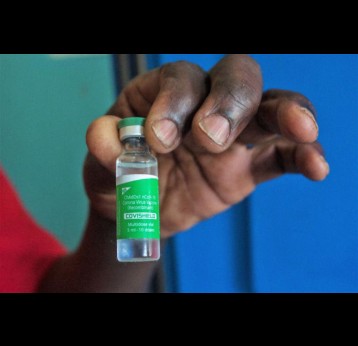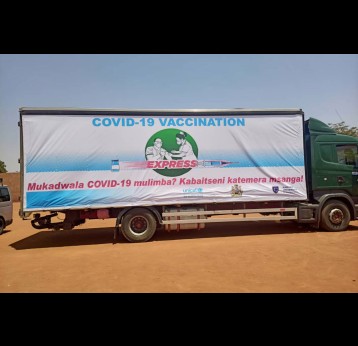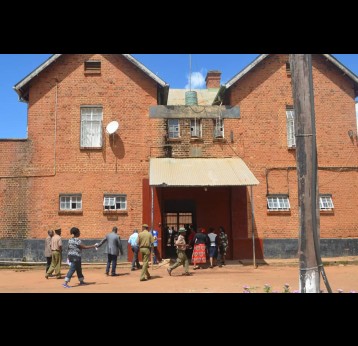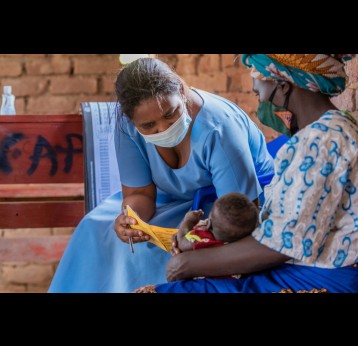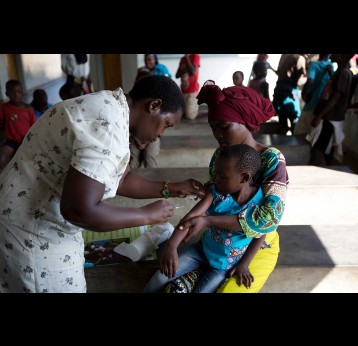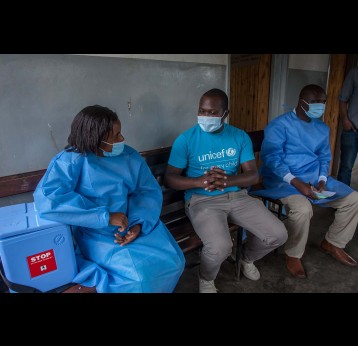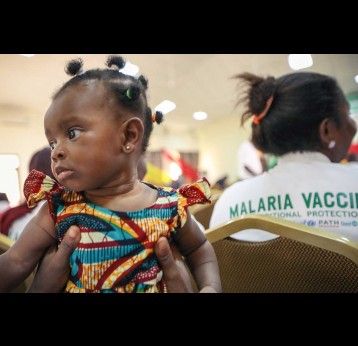Country Information
DTP3 / immunisation coverage
Grade of ConfidenceCommitments: Multi-year programme budgets endorsed in principle by the Gavi Board. These become financial commitments upon approval each year for the following calendar year.
Approvals: Total Approved for funding
Disclaimer: the boundaries and names shown and the designations used on this map do not imply the expression of any opinion whatsoever on the part of Gavi, the Vaccine Alliance concerning the legal status of any country, territory, city or area or of its authorities, or concerning the delimitation of its frontiers or boundaries. Dotted lines on maps represent approximate border lines for which there may not yet be full agreement.
This Gavi country data is made available under the Creative Commons BY 4.0 license: https://creativecommons.org/licenses/by/4.0/
Latest News
All News18 March 2022
The worst disaster in a generation: Cyclone Ana wreaks havoc on health in Malawi
Malawi is using mobile clinics to try to alleviate the effects of a tropical cyclone that hit the southern region of the country.
20 December 2021
“We couldn’t afford to buy these vaccines on our own”: COVAX delivers in Malawi
COVAX deliveries have ramped up in Malawi, given local health workers and officials hope against the pandemic.
16 December 2021
“At last”: Ghanaian football star Michael Essien hails world’s first malaria vaccine
Years before Michael Essien began his extraordinary Premier League football career, he was a barefoot kid in small-town Ghana, scoring between goalposts made of stacked rocks. Like millions of other children in the world’s endemic zones, young…
14 December 2021
Malawi in 60-day COVID-19 “vaccine express” drive
Malawi’s Ministry of Health has embarked on a two months vaccination express campaign to drive uptake and take vaccines to the people.
3 November 2021
Protecting prisoners in Malawi
Malawi prisoners are at higher risk of getting COVID 19; vaccines are helping to contain the spread.
20 September 2021
Reaching zero-dose children in Malawi’s cities
In Malawi urban areas have more unimmunised zero-dose children than rural regions. The government is working hard to close the immunisation gap.
16 September 2021
Now we know: typhoid conjugate vaccines are highly effective in African children
A study in Malawi found that TCVs are 84% efficacious among children 6 months to 15 years of age – the first such evidence among African children.
26 August 2021
Over a million children get protected against polio in Malawi
Malawi’s Ministry of Health recently conducted a nationwide polio vaccine catch up campaign targeting 1.8 million children who had previously missed out on the vaccine.
26 August 2021
A new study suggests the RTS,S malaria vaccine alone is as effective as preventive antimalarials; together they could save thousands of lives.
Subscribe to our newsletter
Sources
| Name | Source | Date |
|---|---|---|
| Total population by country, by year, by age | United Nations, United Nations, Department of Economic and Social Affairs, Population Division. World Population Prospects. | 2019-07-31 |
| Total number of children surviving until 1 year old by country and by year | United Nations, United Nations, Department of Economic and Social Affairs, Population Division. World Population Prospects. | 2019-07-31 |
| UN Life births per gender | United Nations, United Nations, Department of Economic and Social Affairs, Population Division. World Population Prospects. | 2019-07-31 |
| Under-five mortality rate by country and by year | UNICEF CME Info http://www.childmortality.org/, Level & Trends in Child Mortality. Estimates Developed by the UN Inter-agency Group for Child Mortality Estimation (UNICEF, WHO, World Bank, UN DESA, UNPD). | 2020-09-01 |
| Infant mortality rate by country and by year | United Nations, United Nations, Department of Economic and Social Affairs, Population Division. World Population Prospects. | 2020-09-01 |
| GNI per capita, Atlas method (current US$) | World Bank, The gross national income, converted to U.S. dollars using the World Bank Atlas method, divided by the midyear population | 2021-07-01 |
| Antigen Coverage (%) by country and by year | WHO/UNICEF, Coverage refers to the number of administered doses divided by the number of eligible children to receive that vaccine. | 2021-07-15 |
| Percentage of districts with >=80% DTP3 coverage | WHO, Joint Reporting Form (JRF) | 2021-07-15 |
| Percentage of districts with <50% DTP3 coverage | WHO, Joint Reporting Form (JRF) | 2021-07-15 |
| Total Disbursed - Finance Disbursement | GAVI, Access software for Finance (in USD) | 2019-09-17 |
Grade of Confidence (GoC): The WHO and UNICEF estimates of national immunisation coverage (wuenic) are based on data and information that are of varying, and, in some instances, unknown quality. Beginning with the 2011 revision WHO/UNICEF describe their grade of confidence (GoC) in these estimates. As there is no underlying probability model upon which the estimates are based, WHO/UNICEF are unable to present classical measures of uncertainty, e.g., confidence intervals. Moreover, WHO/UNICEF have chosen not to make subjective estimates of plausibility/certainty ranges around the coverage. The GoC reflects the degree of empirical support upon which the estimates are based. It is not a judgment of the quality of data reported by national authorities.
|
Explanation of GoC values: |
|
| *** |
Estimate is supported by reported data [R+], coverage recalculated with an independent denominator from the World Population Prospects from the UN Population Division (D+), and at least one supporting survey within 2 years [S+]. While well supported, the estimate still carries a risk of being wrong. |
| ** | Estimate is supported by at least one data source; [R+], [S+], or [D+]; and no data source, [R-], [D-], or [S-], challenges the estimate. |
| * | There are no directly supporting data; or data from at least one source; [R-], [D-], [S-]; challenge the estimate. |


